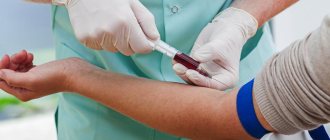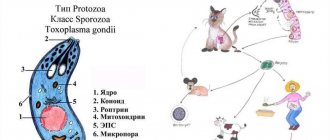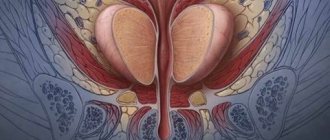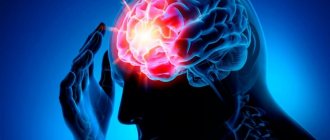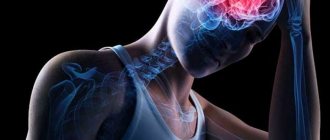Maltseva Marina Arnoldovna
Head of the consultation department - neurologist, specialist in the field of extrapyramidal pathologies, doctor of the highest category
Shabunina Ekaterina Mikhailovna
Neurologist, category 2
A stroke is a very complex condition that has many negative consequences for the patient’s body, significantly reduces the quality of his life, and actually completely “turns off” some important functions, for example, the ability to understand the speech of others, memory problems, etc.
However, people who have had one stroke are at serious risk of having another. Today, unfortunately, this is not uncommon. Most often, a recurrent stroke occurs unexpectedly, affecting other parts of the brain. If a person has not yet fully recovered from the first stroke, the rehabilitation period after the second will be even more difficult and slower, since the area of damage to the brain has increased.
WHAT IS A TRANSIENT ISCHEMIC ATTACK?
A transient ischemic attack (TIA) or “mini-stroke” occurs when an obstruction to the flow of blood through one of the vessels of the brain is created for a short period of time (up to 60 minutes). This is not yet a stroke, but an alarming sign of the danger of its development, since the mechanisms of occurrence of these two conditions are the same, but lost functions (numbness of an arm or leg, impaired vision or speech) after a transient ischemic attack are very often restored.
Miser pays twice
A similar examination is worth undergoing for those who have suffered a hypertensive crisis, a sudden attack of angina pectoris (pain in the heart area), or arrhythmias. These conditions can also be classified as stroke precursors - transient ischemic attacks. What the vast majority of patients do not know about. Most clinic doctors do not correlate these conditions with the threat of acute cerebrovascular accident.
The same cannot be said about far-sighted foreigners. Recently, Professor Shirokov visited the center of cardiovascular diseases in the Japanese city of Osaka. What he saw aroused professional envy in him: in the Land of the Rising Sun they pay much more attention to stroke prevention than here, identifying those who have experienced transient ischemic attacks as a risk group. They are prescribed all the studies mentioned above, which in Japan are part of the mandatory medical examination.
In our country they are not included in the standard of care. It turns out to be a paradoxical situation, Shirokov believes. Instead of preventing the first attack of a stroke, we only come to our senses when a brain catastrophe has already occurred, causing irreversible changes, or even death, of individual areas of the brain.
And the costs that go into treating existing strokes and preventing secondary strokes are not comparable to those needed to prevent this deadly disease. But there is no point in waiting for our state to shake things up and reconsider the standards of medical care. You need to arrange a technical inspection for yourself - the same as many of us do for our cars, sparing no time or money.
WHAT IS ISCHEMIC STROKE?
An “ischemic stroke” means that blood flow through a vessel supplying the brain with oxygen and nutrients is interrupted, and the brain cells in the area where the circulation is disrupted die. In medical parlance, this is called a cerebral infarction. Due to the death of brain cells, a person loses control over the functions for which this part of the brain is responsible. The severity of these disorders depends on the location of the blood clot blocking the vessel and the diameter of the vessel that is blocked. Different areas of the brain control different brain functions, for example, if the right side of the brain is affected, weakness or paralysis of the left side of the body develops. The manifestations of a stroke depend on which area of the brain is affected. Most often, stroke affects people after 60 years of age. Every third stroke that develops is fatal. It may take 6 months or more to restore lost functions after a stroke. Many recover completely and return to work and a full life.
What to do if a person has a stroke?
- First of all, call an ambulance. Sometimes the minutes count.
- Provide fresh air, open windows and doors, and free the person’s neck from constricting clothing.
- Leave the person where the attack occurred. The patient cannot be moved.
- Elevate the person's head and upper body 30 degrees by placing several pillows under the thoracic spine.
- If vomiting occurs, turn the person's head to the side and ensure that the vomit passes away so that the person does not suffocate.
- In the event of an epileptic attack, carefully hold the person, turn his head to the side and insert an object wrapped in cloth into his mouth - a stick, a comb, a spoon.
- In case of cardiac arrest, immediately begin compressions through the chest and perform artificial respiration.
- Wait for the ambulance.
WHAT CAUSES TIA OR ISCHEMIC STROKE?
Blockage of a cerebral vessel by a thrombus, cutting off blood supply to a part of the brain, is the most common cause of stroke or transient ischemic attack. There are two ways of developing a brain catastrophe: the first is when a blood clot forms directly in a cerebral vessel (this is the so-called atherothrombotic stroke), and the second is when a blood clot forms elsewhere in the body, breaks off and is carried by the bloodstream into the brain, leading to a stroke (embolic stroke). ).
The most common signs of stroke
- Sudden weakness, numbness, paralysis of a part of the body: face, arms, legs, half of the body.
- A sudden, intense headache, sometimes described as the worst headache of your life.
- Sudden loss of vision clarity.
- Sudden speech impairment (inability to speak or understand someone else's speech)
- Sudden dizziness, loss of coordination, nausea, vomiting, and sometimes loss of consciousness.
Stroke may recur if effective prevention of this disease is not carried out. Unfortunately, people who have had a stroke or transient ischemic attack have a very high risk of developing another stroke. According to scientific research, a person who has had a stroke is 15 times more likely to have the event happen again compared to people who have not had a stroke. The condition of cerebral vessels affected by atherosclerosis and the predisposition of the blood coagulation system to the formation of intravascular thrombi cause these complications. It has been proven that the risk of recurrent stroke can reach 30% during the first year after the first event and decreases slightly in subsequent years. Your healthcare provider can determine how high your risk is for the event to happen again and take steps to reduce that risk.
Symptoms of a stroke
- Sudden clouding of consciousness. Slurred thoughts, confusion and delirium of speech, difficulty understanding speech.
- Vision problems - blind spots, blurred vision.
- Impaired coordination and balance. The gait may look strange, as if the person has weakness in one or both legs, difficulty moving in space, lost, or dizzy.
- Facial asymmetry: one side of the face relaxes, a person cannot smile from both corners of the mouth.
- Weakness in arm and leg on one side. Ask the person to raise both arms straight in front of them and to the sides.
- A sharp, severe headache for no apparent reason.
A stroke develops quickly. A person himself can identify symptoms within a minute and call for help. If you see the above symptoms in a person near you, immediately call an ambulance and provide first aid.
EFFECTIVE PREVENTION OF REPEATED STROKE MUST INCLUDE THE SUCH DIRECTIONS
- Daily monitoring and effective treatment of high blood pressure. Your blood pressure should be 140/90 mmHg. Art., and for patients with concomitant diabetes mellitus 130 per 80 mm Hg. Art.
- It is mandatory to take medications that “thin” the blood (antiplatelet agents after atherothrombotic stroke and anticoagulants after embolic stroke), intended to prevent intravascular thrombus formation.
- Control and correction of cholesterol levels significantly influence the further progression of atherosclerosis. In patients with high cholesterol levels, it is mandatory to prescribe drugs that lower the level of cholesterol in the blood serum.
Please also pay attention to the following factors that significantly influence the development of a recurrent stroke:
How to prevent another stroke
Category: Useful information.
Every year in Russia, about 500,000 cases of stroke are registered, the mortality rate of which reaches 35%, and 3.2 people per 10,000 people become disabled.
Often, people who have suffered a stroke or transient ischemic attack put their body at risk of a repeat event. People who have had a stroke over the age of 45 are more likely to have a recurrent stroke, with 30% of recurrent strokes occurring within the first year after treatment.
Most often, the cause of a recurrent stroke is the fact of a person’s negligent attitude towards his health.
People who have had a stroke often stop following their doctor's orders. Having received treatment after the first stroke, a person gradually returns to his previous lifestyle, which is sometimes far from healthy. The consequences after suffering a second “stroke” will be much more severe than after the first stroke.
Causes of recurrent stroke
- lack of oxygen in the vessels of the brain, which must consume more than 20% of all oxygen entering the body
- bad habits: alcohol, smoking, drugs
- unhealthy lifestyle, non-compliance with daily routine
- unhealthy diet: excess fatty, spicy, sweet foods combined with physical inactivity
- constant pressure surges
- overwork, stress and high loads on the brain
- unfavorable environmental situation
What do people who have had a stroke need to monitor?
- Hypertension is one of the most important established risk factors for stroke. The risk of stroke is directly related to the degree of increase in both systolic and diastolic blood pressure. Avoid blood pressure fluctuations. It is necessary to regularly measure blood pressure and constantly take antihypertensive drugs prescribed by a doctor. Blood pressure should be no higher than 140/90 mm Hg, and in patients with diabetes – no more than 130/80 mm Hg. If atherosclerosis is diagnosed, it is necessary to take drugs that lower cholesterol and prevent blockage of blood vessels by plaques.
- Excess weight negatively affects the functioning of the heart and blood vessels; obesity often results in high blood pressure and diabetes. Control your weight. Reduce consumption of sweet, fatty, fried, flour foods. Limit salt, eggs, liver, any caviar. And foods such as pomegranate, kiwi, wheat germ, and citrus fruits help get rid of cholesterol.
- Complete cessation of smoking, alcohol and other bad habits. Alcohol abuse is accompanied by an additional increase in blood pressure, the development of cardiomyopathy and heart rhythm disturbances. Smoking accelerates the development of atherosclerosis and the formation of blood clots in the vessels of the heart and brain. It is necessary to take blood thinning medications: thrombo-ASA, etc.
- Not a day without physical activity. Moderate physical activity is necessary: work in moderation, rest with benefit. Spend more time in the fresh air, work no more than 4-5 hours a day, take 15-minute breaks between work for therapeutic exercises. Daily walks of at least 30 minutes.
- Maintain emotional balance.
Preventive measures aimed at preventing a recurrent stroke should begin from the 2nd week after the stroke and continue continuously.
Unfortunately, strokes tend to recur, destroying new areas of the brain.
Rules of conduct for a repeat attack
An incipient stroke can be diagnosed by a number of characteristic signs: the appearance of complaints of numbness of the limbs or their paralysis, blurred vision or blindness of one eye, speech impairment, impaired coordination of movements or loss of consciousness.
For the initial diagnosis of stroke, the patient is asked
- Stretch your arms out in front of you, palms up, with your eyes closed. A sign of a stroke is that one arm begins to move down and to the side.
- raise both arms above your head - they should rise evenly to the same height.
- stick out your tongue - during a stroke, it deviates to the side.
- say one simple sentence. With a stroke, speech defects often appear, diction and articulation deteriorate.
- smile - during a stroke, the smile will be distorted, and the corners of the lips “look” in different directions.
If suspicions of a stroke are confirmed, you must immediately call an ambulance.
Before the ambulance arrives
- put the patient to bed
- raise the patient's head 30 degrees
- loosen tight clothing: belts, collars, etc.
- remove all removable dentures from the mouth
- provide free access of fresh air to the patient
- measure blood pressure
- take a medicine that normalizes blood pressure from those that have already been used by the patient previously
- if the patient is unconscious, it is necessary to turn the head slightly to the side, which will allow saliva and mucus to flow out, thereby preventing them from entering the windpipe.
An ambulance will definitely take the patient to the hospital.
Neurologist Idolova A.A.
Print Email
ALCOHOL
Alcohol abuse leads to an increased risk of hemorrhagic stroke (bleeding in the brain). Reduce the amount of alcohol you consume to a minimum.
OBESITY
Excess weight negatively affects the functioning of your heart and blood vessels. People who are overweight or obese often have high blood pressure and diabetes. These factors significantly increase the risk of developing a recurrent stroke. To reduce the risk, measures to correct body weight are necessary, which your doctor can suggest for you individually.
Problem #1
For angioneurologists, preventing recurrent stroke has always been problem No. 1. Among the causes that lead to disability and death, recurrent stroke ranks high. If after the first stroke the patient lives on average about 8–9 years, then after the second acute cerebrovascular accident, the life span allotted to him is reduced to ... 2–3 years.
Experts have no doubt that without proper prevention and treatment, a vascular accident can recur. It is enough to refer to the same statistics, according to which, if a patient has suffered one stroke, then within a year with a probability close to 15% he will suffer a second one, and after a few years this probability approaches 30–40%.
“After a stroke, the body retains the mechanisms that led the patient to this development of events: a tendency to intravascular thrombus formation, atherosclerotic changes in the arteries,” explains Professor Shirokov. – In addition, those who have suffered an acute cerebrovascular accident often have other diseases, such as severe diabetes, hypertension, heart failure, and arrhythmia. In this case, the reserves for preventing a recurrent vascular accident in patients are small. Especially if concomitant diseases are in advanced form.
Our information
Of the 500 thousand strokes that are registered annually in our country, ischemic ones, caused by blockage or narrowing of the vessels supplying the brain, account for the vast majority - 85%.
Hemorrhagic strokes with hemorrhage in the brain or under its membranes as a result of rupture of the vascular wall are much less common - in 10-15% of cases, but are more severe and destructive in consequences. Fortunately, since machines for measuring blood pressure have become a staple in our families, there have been fewer hemorrhagic strokes. And the number of ischemic cases, on the contrary, has increased. Why? There are many mechanisms for the development of ischemic stroke. Among them is a destructive lifestyle with bad habits, poor nutrition and physical inactivity (lack of movement).
***
If a person close to you exhibits the signs of transient cerebrovascular accident described above, you should put him or her to bed and measure his blood pressure. If it is above 160 mm Hg. Art., you must definitely call an ambulance and give the patient his usual blood pressure-lowering drug. You can also give aspirin. Simple or soluble is better: medications in special forms that prevent stomach irritation act more slowly.
Forecast for life
The state of health after a recurrent stroke deteriorates greatly: motor functions are inevitably impaired and mental abilities fade. A person who has suffered a second attack needs help from family or medical staff for life .
The severity of the consequences largely depends on the location and volume of the affected brain tissue, the age and gender of the patient, and the presence of concomitant pathologies.
Chances of surviving into old age
Only about 30% of older patients survive a second stroke . The life expectancy of surviving patients after an attack does not exceed 3 years on average.
Read on our website about microstroke, spinal, cardioembolic, brainstem, cerebellar, extensive, left-sided and right-sided, lacunar and ocular stroke.
Consequences
Another vascular accident can lead to dangerous health consequences:
- memory loss;
- blurred vision or complete blindness;
- loss of speech skills;
- decreased cognitive abilities, dementia;
- irreversible changes in the brain;
- problems with bowel movements;
- swallowing dysfunction;
- partial or complete paralysis.
After a relapse, patients experience uncontrollable mood swings, experience deep depression, fall into apathy, and lose appetite. The patient needs continuous care from medical staff and relatives .
Second stroke: prevention measures
A patient who has previously suffered a first stroke is at risk of relapse of the disease. Leading specialists at the Yusupov Hospital recommend that patients follow preventive measures to improve the prognosis in the event of a recurrent stroke.
Recommendations from neurologists and rehabilitation specialists at the hospital:
- take medications prescribed by your doctor accurately and promptly;
- regularly visit a specialist and undergo examination;
- monitor blood pressure and take stabilizing agents;
- carry out therapeutic exercises at a moderate pace;
- eat rationally and give up bad habits that have a serious impact on blood pressure;
- exclude heavy physical labor and dangerous factors for re-development of the disease. Physical activity should be within reason;
- monitor your emotional state, avoid stressful situations and tension.
Prevention of recurrent stroke allows for the most favorable prognosis, provided that the person adheres to the recommendations of specialists throughout his life.
Stroke is a disease that requires regular visits to a neurologist and other specialists. You can make an appointment with specialists at the Yusupov Hospital by phone. Highly qualified doctors of the hospital, together with their colleagues, manage to successfully solve the medical and psychological problems of patients, returning them to an active life and improving their well-being.
Second stroke: signs of illness
A recurrent stroke, the prognosis of which will be improved by neurologists at the Yusupov Hospital, is sometimes difficult to diagnose. Signs of a recurrent stroke:
- impaired sensitivity of the body or numbness of individual muscles or half of the body;
- impaired speech abilities;
- the appearance of digestive problems, manifested in the form of vomiting or nausea;
- deterioration of vision or the onset of complete blindness;
- impaired coordination of movements;
- disturbance of consciousness, manifested in states from drowsiness to fainting.
When the first signs of the disease occur, the patient should receive urgent medical care. Neurologists at the Yusupov Hospital provide professional emergency care that can improve the patient’s condition.






